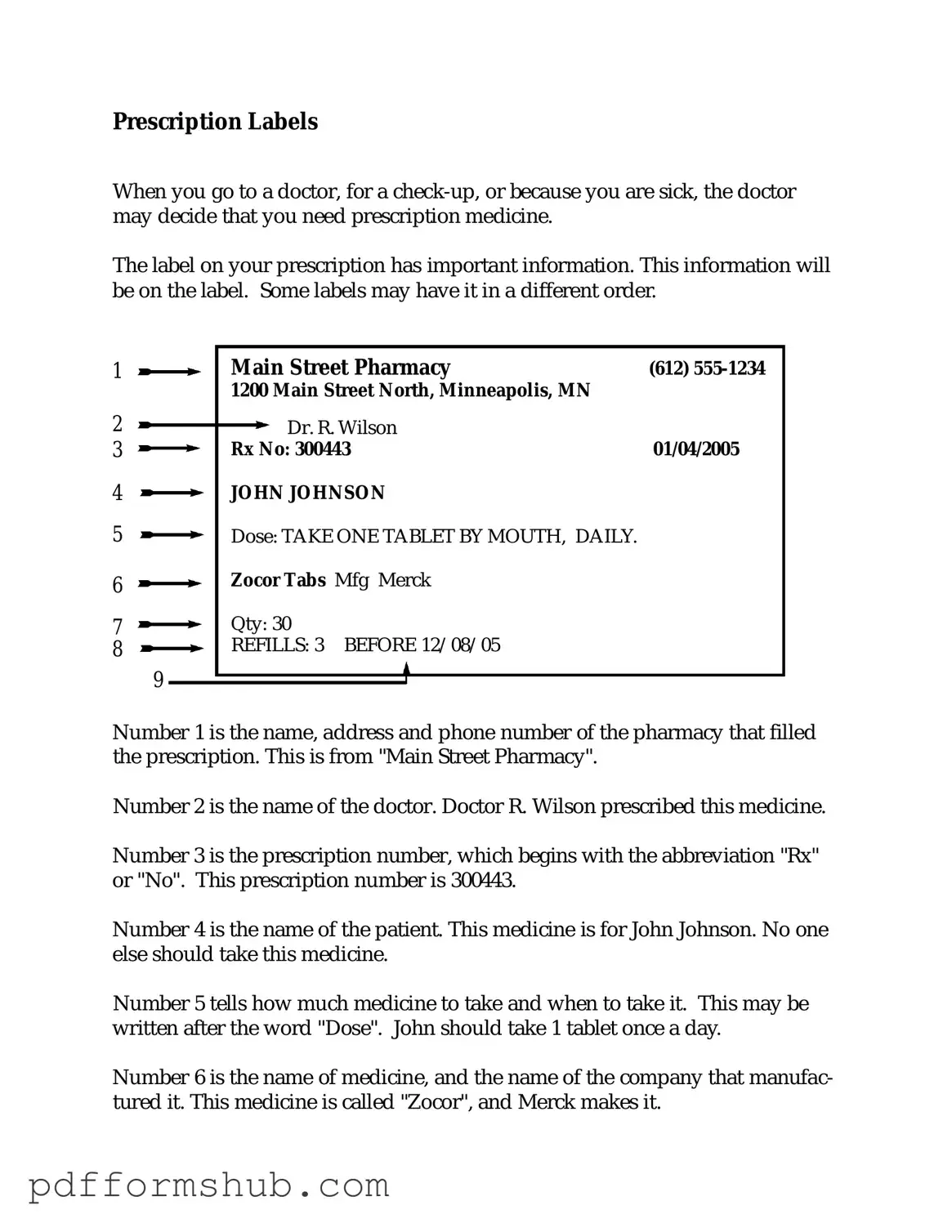The Prescription Label form plays a crucial role in the healthcare process, serving as a vital communication tool between healthcare providers, pharmacists, and patients. This form typically includes essential information such as the patient’s name, the prescribing physician’s details, the medication name, dosage instructions, and the pharmacy’s contact information. It ensures that patients receive the correct medication and understand how to use it safely. Additionally, the form often contains warnings about potential side effects and interactions with other drugs, which are critical for patient safety. By standardizing this information, the Prescription Label form helps to minimize errors and enhances the overall efficiency of medication management. Its design and layout are tailored to be user-friendly, making it easier for patients to follow their treatment plans effectively. Understanding the components of this form can empower patients to take an active role in their healthcare journey.
